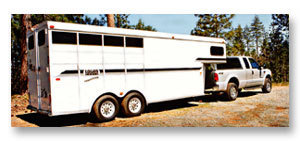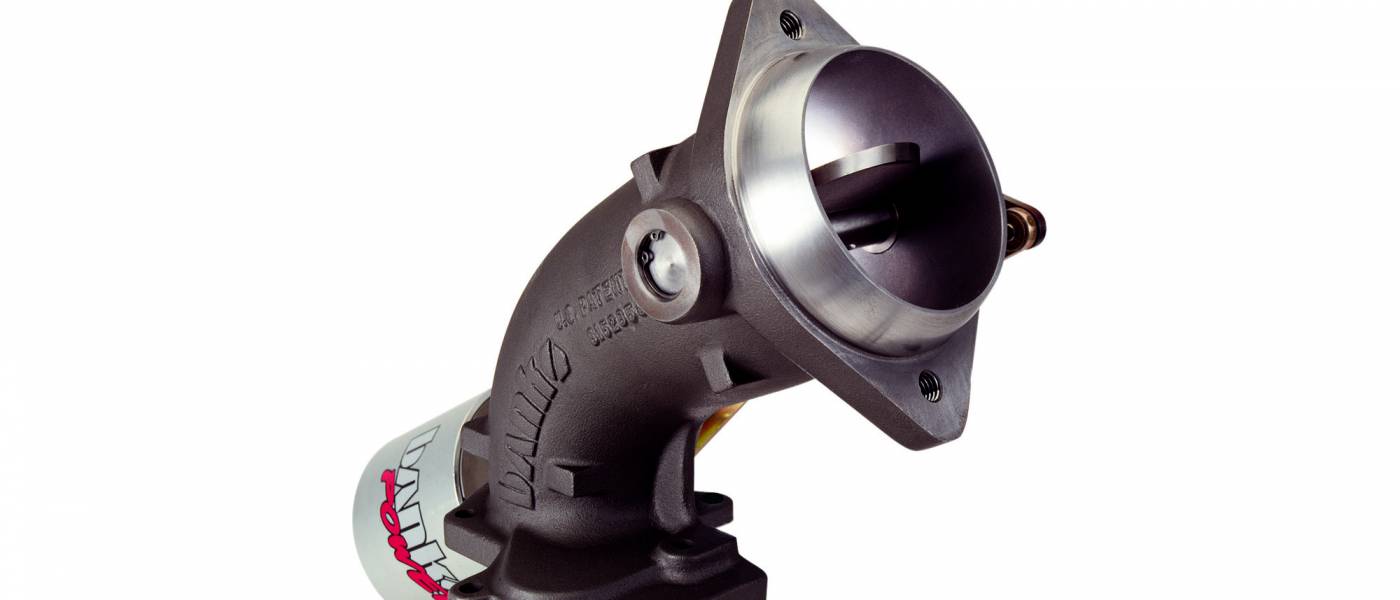Truckin’ & Trailerin’
Western Horseman July 2002
Test of Banks Brake & Banks SmartLock trans brake for Ford Power Stroke turbo-diesel trucks.
| Reader and horseman Hal Denton of Sonora, Calif., tested the Banks Brake and SmartLock (left) systems. Read on for his results. |
The benefits of exhaust braking, an update on our long-term road-test, and the scoop on a hot new product
One of the astonishing aspects of writing this column is your involvement and enthusiasm for the magazine. This was especially apparent when we decided to conduct a real-world test of Gale Banks Engineering’s high-performance exhaust brake for diesel pickups.
To do the job, we turned to WH reader Hal Denton, a Sonora, Calif., rancher, horse owner and active trail rider. A knowledgeable horseman with many years of horse-hauling experience, Hal recently upgraded his towing vehicle to a 2001 Ford F-250 Super Duty, four-wheel drive pickup, powered by the 7.3–liter Power Stroke diesel engine. This model was ideal for our product test. He agreed to the test, offering to share his results, good or bad.

Brake Basics
Before detailing Hal’s report, here’s an overview of the Banks Brake system. Operated by a dash-mounted switch, the device is a uniquely designed butterfly valve installed in the exhaust stream of a turbo-diesel engine to allow engine retardation (or supplemental braking). This is especially important if you tow heavy loads or do lots of mountain driving. A diesel has no throttle valve, so it lacks the engine-braking benefit of vacuum during the intake stroke with the throttle closed. Once installed, this valve slows down the engine, thus your vehicle, more rapidly when desired. It also gets the optimum amount of back-pressure and promotes proper airflow when the brake isn’t in use, something most engine brakes fail to address.
On automatic transmissions, the Banks Brake also offers the SmartLock system, to further enhance braking. This plug-in module automatically locks the torque-converter clutch and raises transmission-line pressure in second gear and higher, thus increasing transmission-holding capacity while braking. This also reduces transmission slippage and lowers transmission fluid temperatures.
Does It Work?
Did the Banks Brake live up to the hype?
After having the Banks Brake and SmartLock systems installed at an authorized dealership, Hal began his test. Here are his results.
The systems were tested over a 30-mile stretch of Highway 108 in Tuolumne County, Calif. The course began at an altitude of 6,000 feet and dropped to approximately 2,500 feet. The highway winds through the Sierra Nevada mountains, offering a combination of twisting curves and semi-straight downhill grades, ranging from 3 to 6 percent.
We conducted the first test with an unloaded truck, Banks Brake off and transmission in drive. We applied the service brakes frequently as we approached tighter curves and on steep grades. Overall the service brakes worked well with only slight heating.
In test two, we went down the same course unloaded, this time with the Banks Brake on. We navigated the entire course without using the service brakes.
For test three we added a fully loaded three-horse gooseneck trailer. We placed three horses in the trailer for a total load of approximately 8,500 to 8,700 pounds. Once at peak elevation, we started downhill. Along the first section, several miles of winding road, we kept the Banks Brake off. We used the service brakes often. On less winding sections of 3-to 4-percent grade, we maintained a reasonable speed, but again used the service brakes repeatedly. We made it to the bottom of the course without problems using the service brakes.
After checking the horses, we headed back up the course for another run. We dropped the transmission into second gear, activated the Banks Brake and began the downhill descent.
On the first leg of the run, we used the service brakes about 20 to 25 percent of the time, compared to more than 50 percent of our run without the Banks Brake.
On the straight portion of the highway, with only a slight downhill grade, we shifted into drive and maintained 50 to 55 mph without using the service brakes. Our experience on the steeper sections was equally good. We maintained a reasonable speed at the beginning of the steep grade. However, as the grade increased we shifted back into second gear and with the help of the Banks Brake, completed the descent reverting to the service brakes sparingly. We didn’t use them hard until we stopped the rig at the end of our test.
Overall, the Banks Brake and SmartLock systems are effective, although they don’t replace the service brakes, common sense and caution when hauling heavy loads. They simply make the job safe and easier.

